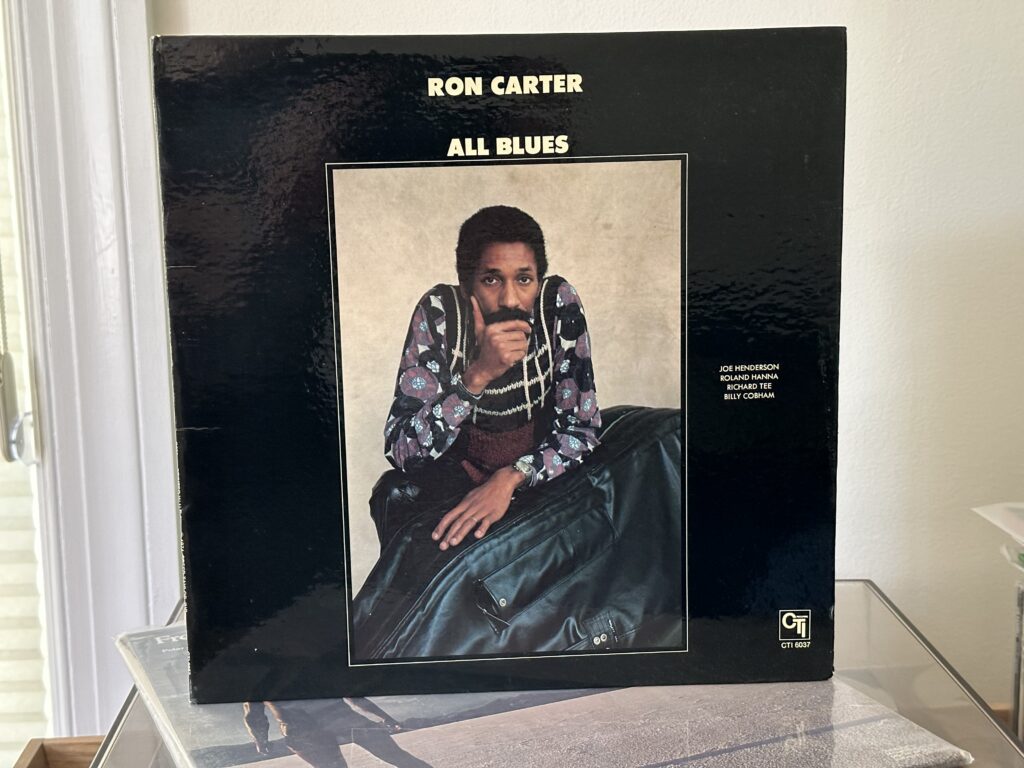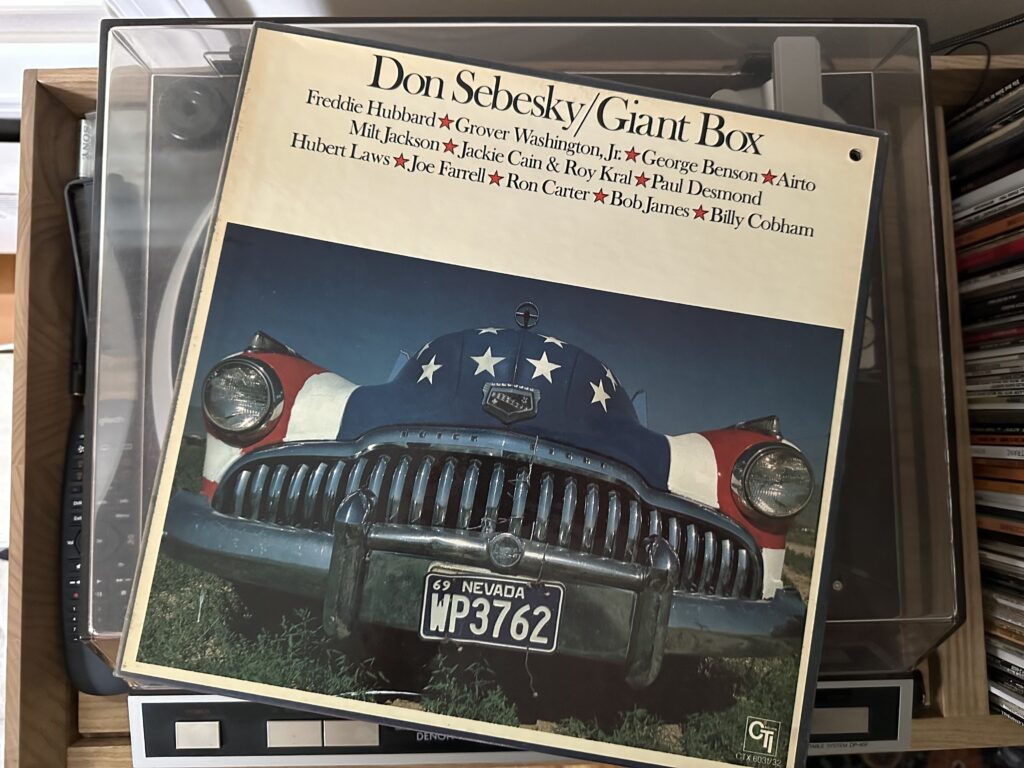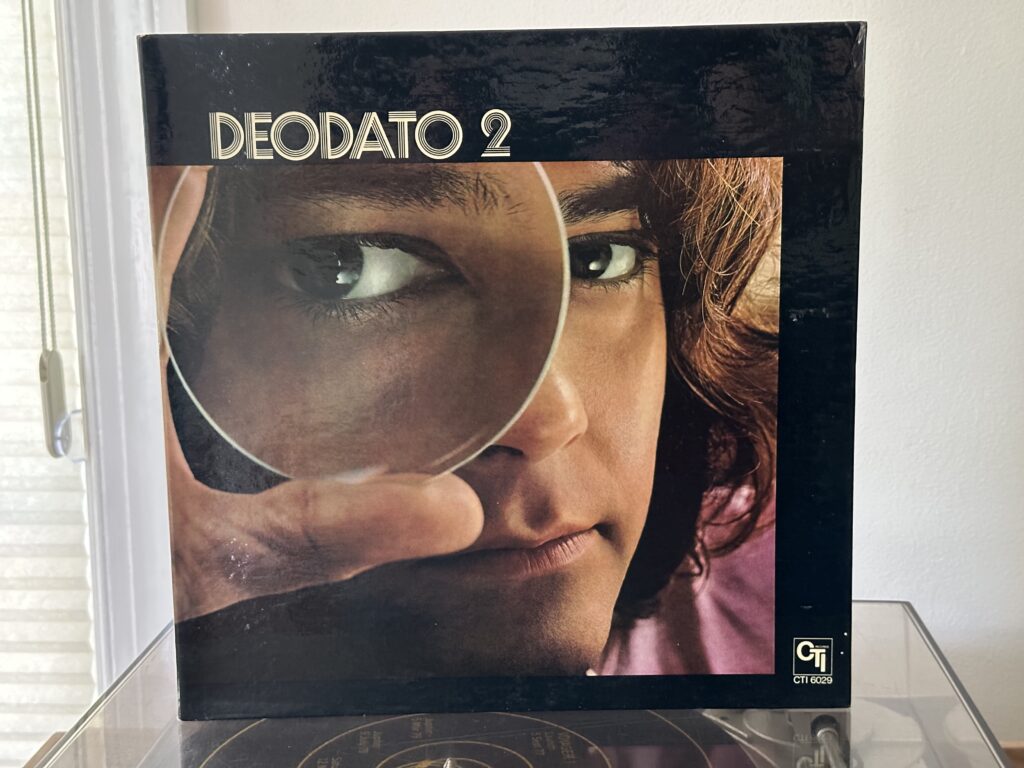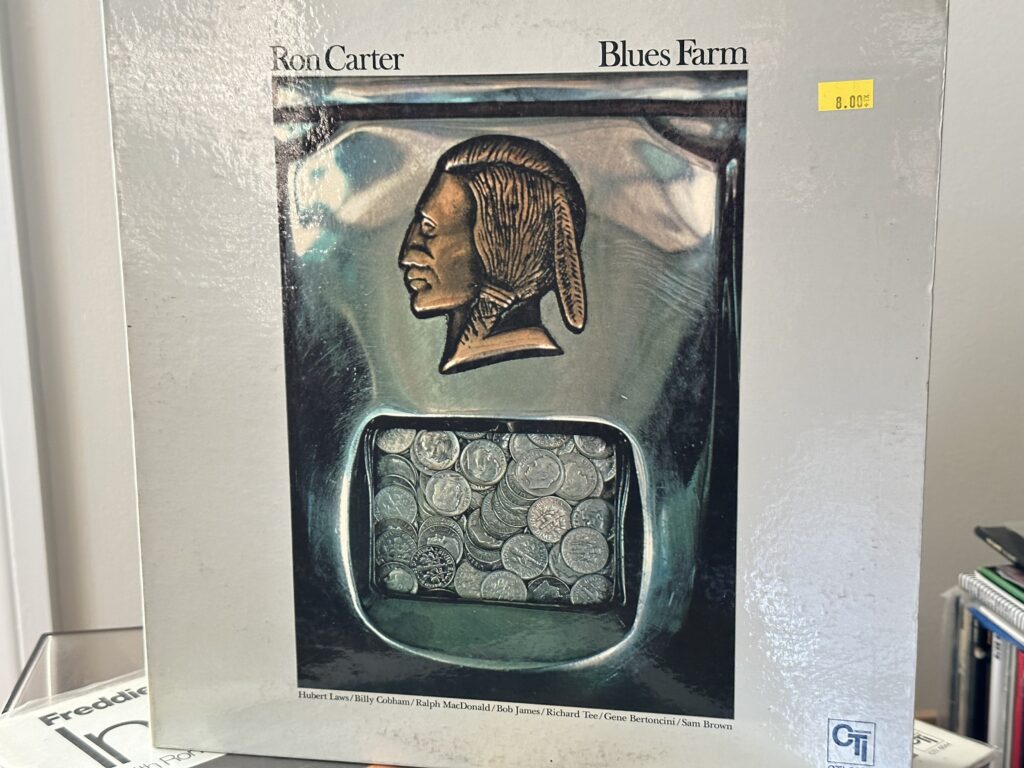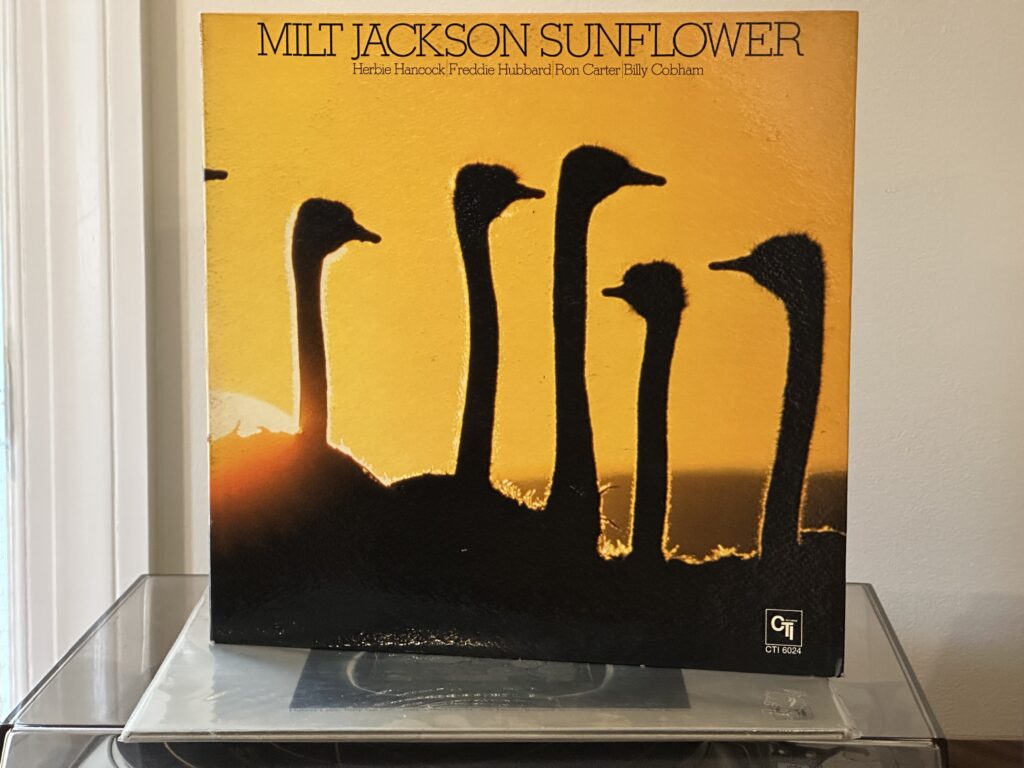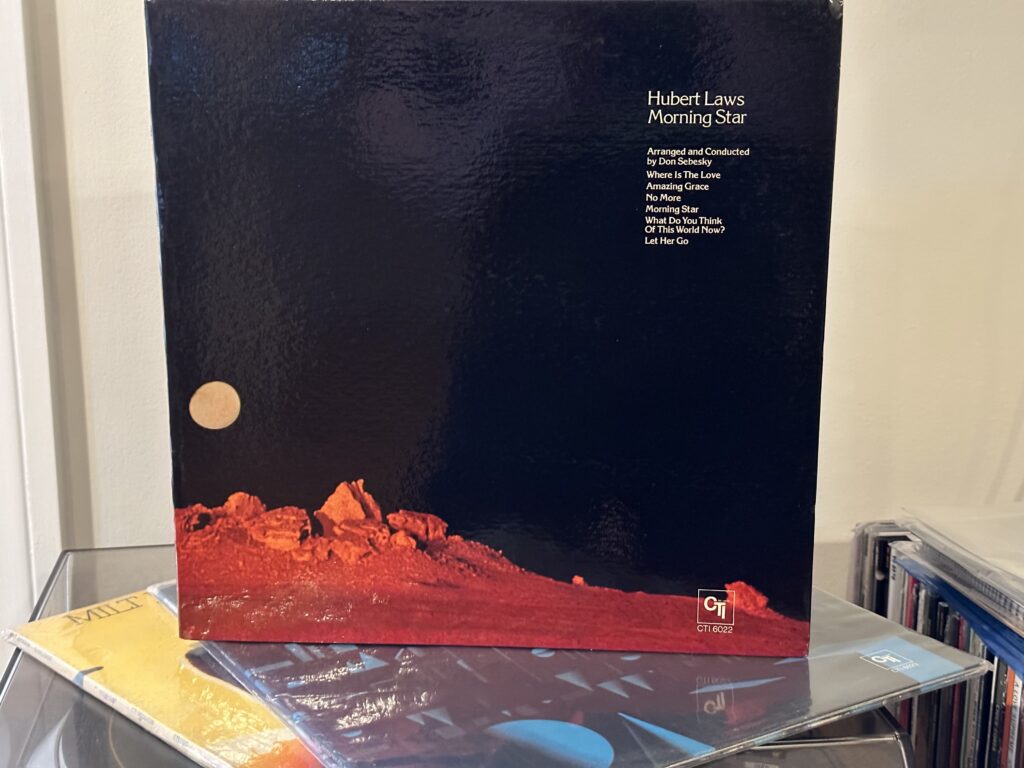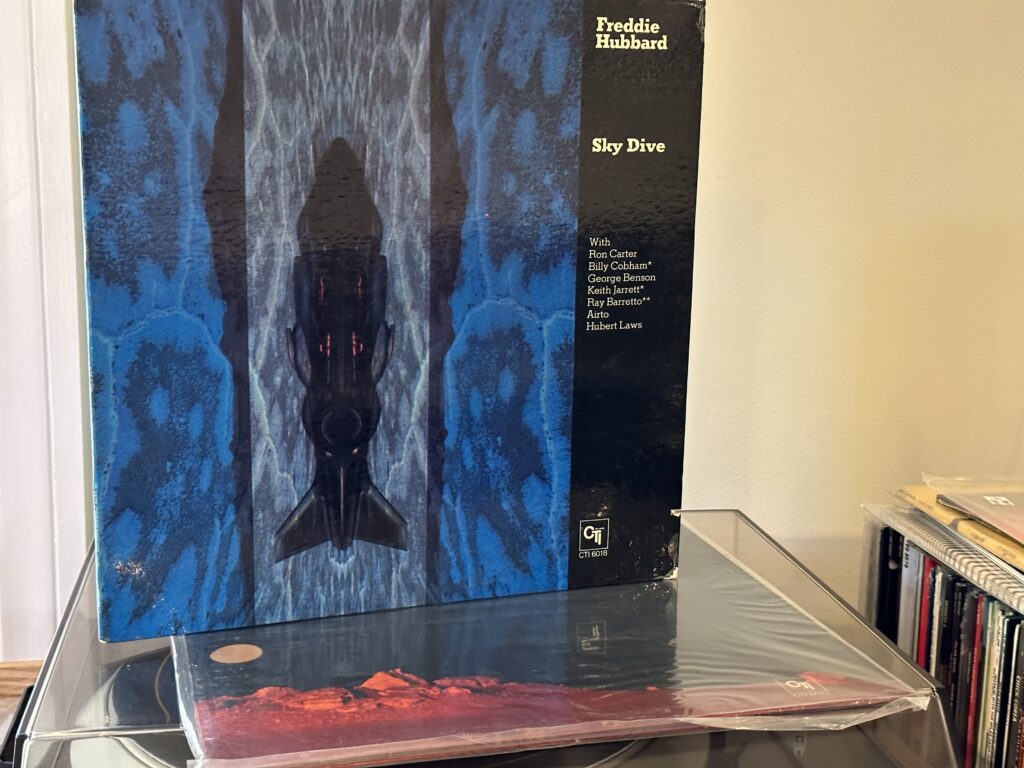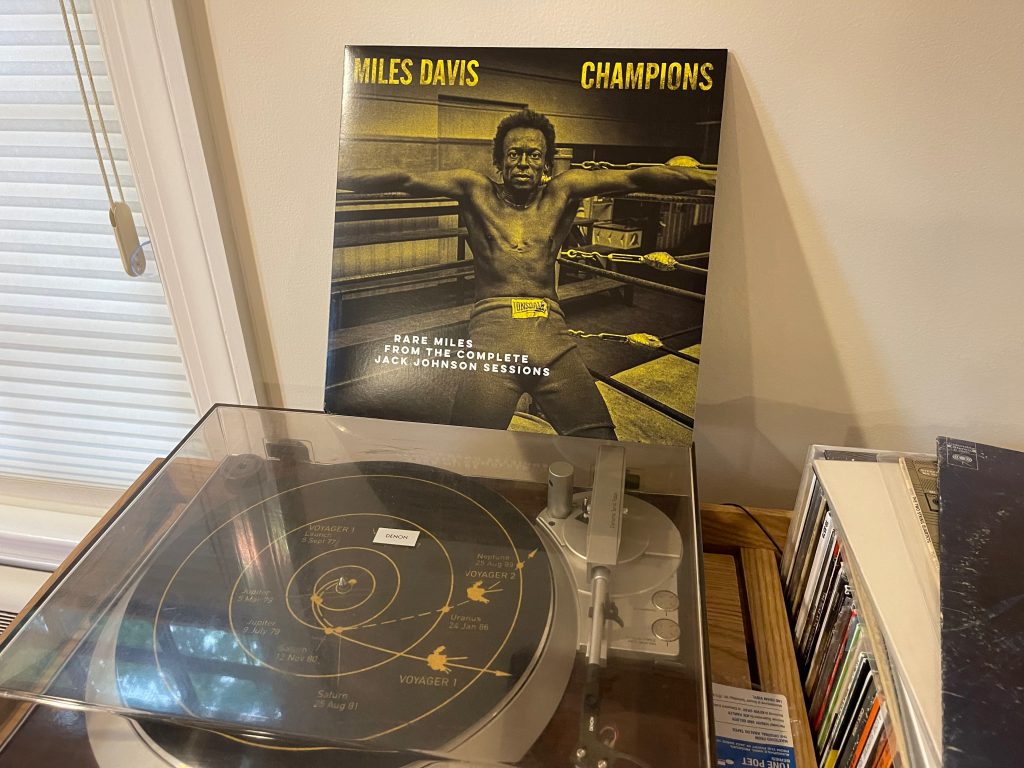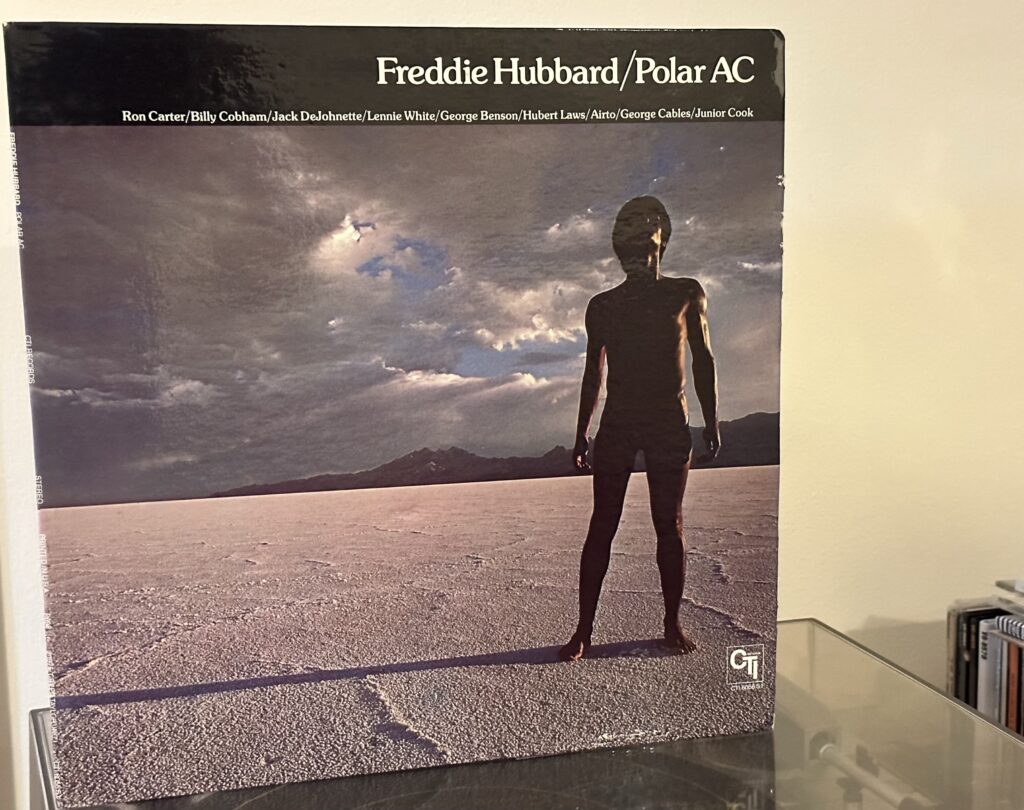
Album of the Week, August 19, 2023
Last time we wrote about Freddie Hubbard, we talked about his departure from CTI. I accelerated that story a little bit. We talked about his last studio album, Keep Your Soul Together, and we reviewed his concert album with Stanley Turrentine. But after his departure from the label, Creed Taylor decided he needed more Hubbard releases. And so we got The Baddest Hubbard, a greatest hits compilation, and today’s record, Polar AC. An odds and sods collection if ever there was one, the record collects extra tracks recorded in the sessions for First Light and Sky Dive, as well as two tracks recorded on April 12, 1972. It accordingly represents prime Hubbard.
“Polar AC,” also called “Fantasy in D” or “Ugetsu,” is a Cedar Walton composition from the First Light session. It’s a stunner, with the funky beat established by Ron Carter solo in the first bars, then joined by Jack Dejohnette. Hubbard is in top form here on the flugelhorn, playing a breezy, relaxed solo atop the insistent groove of the rhythm section. Sebesky’s strings support the theme, stepping forward at the chorus and then fading back during the solos. Hubert Laws’ flute is likewise in fine fettle throughout.
“People Make the World Go Round,” recorded during that April 1972 session, is an earlier run at the tune that would later appear on Milt Jackson’s Sunflower. Here the strings, in Bob James’ arrangement, are a little less prominent, as is Ron Carter’s bass, and the track opens with about thirty seconds of effects in the guitar, flute and trumpet, outright noise, and a half-articulated sigh. But the basic groove of the Thom Bell/Linda Creed tune is intact, and the interplay between Hubbard and Laws in particular is striking. The strings here are less of a Sebesky-esque blanket and more of a Greek chorus, offering stabs of sound and responding to Hubbard’s solo.
A second Stylistics cover from the same album as “People,” “Betcha By Golly Wow” is heard here from the same session. The intro dispenses with the effects on the intro, going directly into the tune with Hubbard’s trumpet surrounded by a bath of strings. This is the first place on the record where the string arrangements feel intrusive; fortunately the band is hot behind Hubbard, with Laws particularly innovative in his support and counter-melodies.
“Naturally,” recorded during the Sky Dive sessions, opens with Hubbard and George Benson playing a straight take on the Nat Adderley standard before Ron Carter and Billy Cobham join in, completing the piano-less band that Sebesky surrounds with strings and winds in the arrangement. More than many Hubbard tracks during his CTI years, this one harks back to the straight bop that he played in his 1960s days at Blue Note. The band swings the tune, and Cobham’s drums are just punchy enough to keep things moving along briskly. Hubert Laws joins for the second solo and likewise plays things straight before handing off to Benson, whose cleanly articulated solo reminds us of how great he could be as a soloist. The orchestral arrangement is heavy here, frequently stomping on the ends of solos, in an atypically unsubtle Sebesky chart.
“Son of Sky Dive,” simply titled “Sky Dive” on later reissues, is just the core band, as if Sebesky had overspent his budget on the string players in the other tracks of the compilation. Whatever the case, it’s a great run through of the tune, and makes a strong case for Hubbard the composer.
This 1975 release was really the end for Hubbard on CTI, and maybe the beginning of the end for CTI. The label’s original 6000 series ended later that year along with its distribution deal with Motown, and the new 7000 series that Taylor started to continue the music only released nineteen titles before the label entered bankruptcy. But there was some spectacular music still to come, and we’ll hear one of the best next week.
There doesn’t seem to be a full version of this album posted to YouTube, either as a playlist or as a single video, so I’ve switched to Apple Music to allow you to listen to the whole album here:

